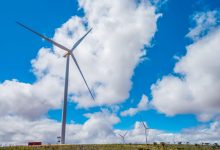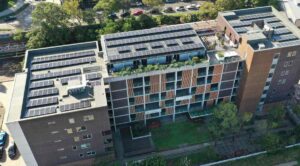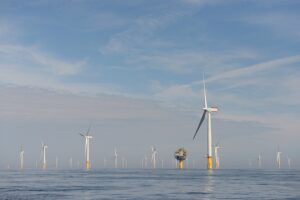Engie, the world’s biggest independent power producer, is reviving its push into the Australia renewable energy market with the purchase of development rights to the $750 million Hills of Gold wind project in northern New South Wales.
Engie will take on the ongoing development of the 420MW wind farm, the largest wind project in the state, which is set to be constructed near the town of Nundle in NSW’s New England region, after buying out the development entity Wind Energy Partners.
The project will be at the heart of what is set to be one of Australia’s first renewable energy zones, planned by the NSW government for the New England region, and is set to create more than 215 direct jobs during the construction phase, and 30 ongoing roles once in operation.
Engie Australia’s general manager of asset management, Andrew Kerley, said that Engie would look to draw upon its global project development expertise to complete the construction of the Hills of Gold wind farm.
“The Hills of Gold Wind Farm is a quality project that adds renewable energy to the national grid, while also creating local economic activity during construction and operation of the 25-year lifespan of the asset,” Kerley said.
“We’re looking forward to the opportunity of building the Hills of Gold Wind Farm and to working with the local community to unlock the benefits of renewable energy development.”
Engie is one of the world’s largest electricity utilities, with the French multinational operating more than 115GW of generation capacity globally, including a 19GW portfolio of renewable energy projects.
 Engie’s acquisition of the rights to the Hills of Gold wind farm is the latest in a number of multinational energy companies that have made a push into the Australian clean energy space, as they work to pivot away from businesses built on traditional fossil fuel projects.
Engie’s acquisition of the rights to the Hills of Gold wind farm is the latest in a number of multinational energy companies that have made a push into the Australian clean energy space, as they work to pivot away from businesses built on traditional fossil fuel projects.
This includes global energy giants Enel, and oil majors Total, Shell and BP, which have all made major acquisitions as they expand their local investments in clean energy ventures, and who can provide the balance sheet to overcome nervous financiers.
The project will involve the installation of up to 70 wind turbines, with a rated output of 6MW per wind turbine, and will include the installation of an onsite substation linking the project to the transmission network link that runs between Liddell and Tamworth.
At 6MW per turbine, the project will see some of the largest wind turbines ever deployed in Australia and with each turbine standing at more than 200 metres in height.
Engie is no stranger to Australia, having been the majority owner and operator of the brown-coal Hazelwood power station in Victoria that was closed in 2017, and it has set itself a goal of supporting up to 2,000MW of new wind and solar generation capacity in Australia.
Earlier in October, Engie joined Infrastructure Capital Group and Mitsui to establish the Australian Renewable Energy Trust, a new investment vehicle that was kick-started with the transfer of Engie’s 119MW Willogoleche wind farm into the fund. It is likely that the Hills of Gold project could also be transferred to the trust once operational.
Engie has also been a major partner in the Greater Springfield development, outside of Brisbane, which is aiming to become an energy-neutral city, in a quest to be the ‘world’s greenest city’ by 2038. Last week, Engie announced that it would support the roll-out of electric vehicle and hydrogen refuelling infrastructure throughout the city.
Construction of the Hills of Gold wind farm is expected to commence in early 2022.










